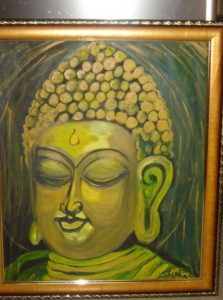Sanyasi /Sadhus of Varanasi: Detached Souls Who Are Integral Part of Kashi Culture
Living souls with no familial, social, material or earthly bonds
Indian culture and heritage also embodies living souls with no familial, social, material or earthly bonds known as Sadhus and Sadhvis (female counterparts). There are nearly 3–4 million Sadhus in India. A big ratio of those sanyasi/sadhu of Varanasi: detached souls who are integral part of Kashi culture, reside in Banaras and nearby region of Prayagraj and Allahabad of Uttar Pradesh, India.
Sadhus are holy and religious people who have taken oath with their gurus to lead life of austerity and peace in service of religion and community at large. They keep moving from place to place with no home of their own and accept willingly food donations and alms from homes, community and keep visiting temples and pilgrimage centers and lead life of spirituality.
Sadhus also called “sanyasi or vairagi”, belong to different “sampradaya”(sects or spiritual groups with varied beliefs) and follow Hinduism, Buddhism, or Jainism. They sometimes reside in monasteries and keep themselves busy in spreading religious and spiritual sayings, prayers and meditation concepts and “Yoga Sadhna”(Yoga practice).
Shaiva Sadhus follow Lord “Shiva” and Vaishnava sadhus follow Lord “Vishnu” and His reincarnations (as Rama and Krishna). Shakta sadhus follow “Shakti” or Goddess Shakti.
Sadus and sadhvis belong to different sects as they believe in different Philosophies and traditions and follow their Guru’s or founder’s lineage.
“Shaiva” Sadhus dress in saffron colored clothing and mark forehead with Trident mark called “Tripundra” and live monastic life.
Some groups known as “Aghoris” experiment with unusual practices and traditions which are not seen in a good light by urban society hence are under suspicion and neglected sometimes.
Some sects (Sampradayas) carry weapons as trident, bow and arrow and sorts and follow practices of wrestling and martial arts and believe themselves as saviors of Hindus. They also belong to different groups known as “Chaavni” or “Akharas” according to their founder Gurus.
Female Sadhus or Sadhvis live life of austerity in ascetic compounds. They lead a secluded life and considered manifestation of Goddess or “Devis”. They send their lives in religious teachings and education of underprivileged, deserted and neglected beings of society.
Sadhus also perform the auspicious prayers and chants for the festive and religious events at Holy river bank of Ganges in Varanasi.
Some sadhus perform and teach the an old art of magnetizing and charming snakes and also help community by keeping them away from serpentine danger in rural areas and also providing herbal relief from accidental snake bites.
Some members of the sadhu group, help community of believers, to foresee future, by palm reading and astral chart reading (Astrology).
Rural and modern community people are equally benefitted, by predictions of personal and professional lives in advance. This at least provide time to plan ahead, some amusement and distraction from mundane lives!:)
In general Sadhus are non-violent, peaceful living souls, intertwined with common people, on the canvas of democratic and modern India, who are allowed to follow their supernatural goal of attaining Moksha (Nirvana or Liberation).
